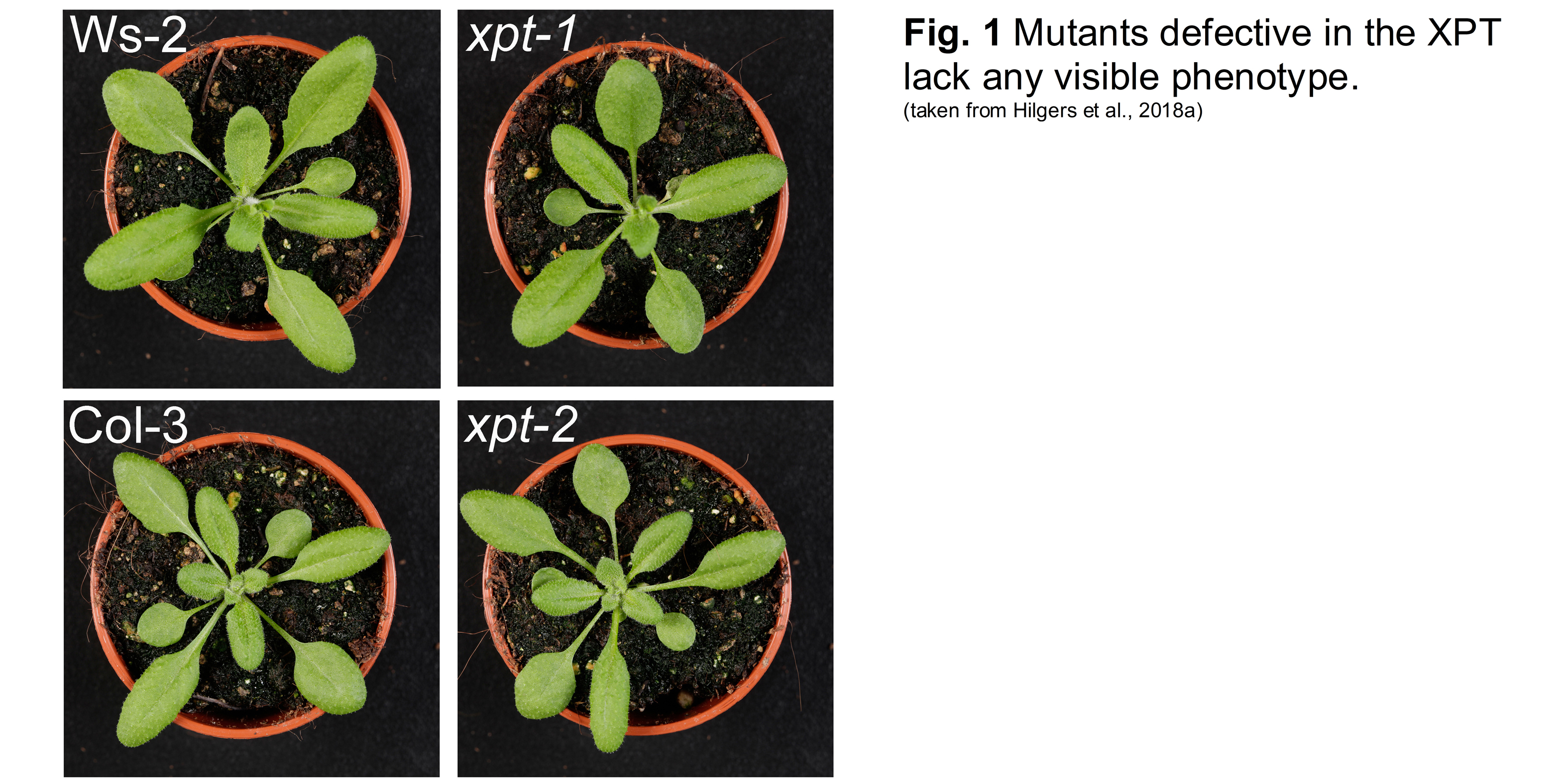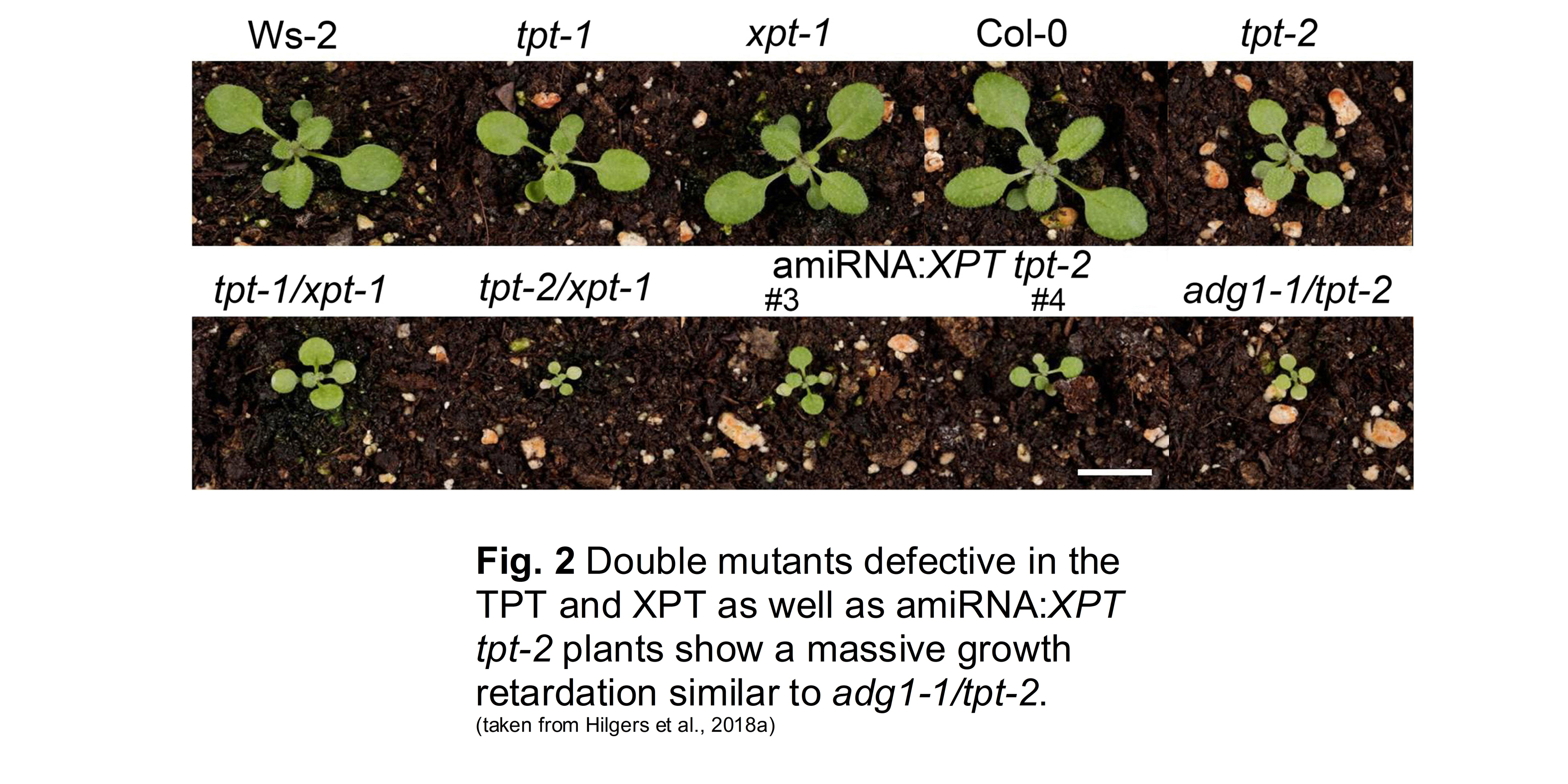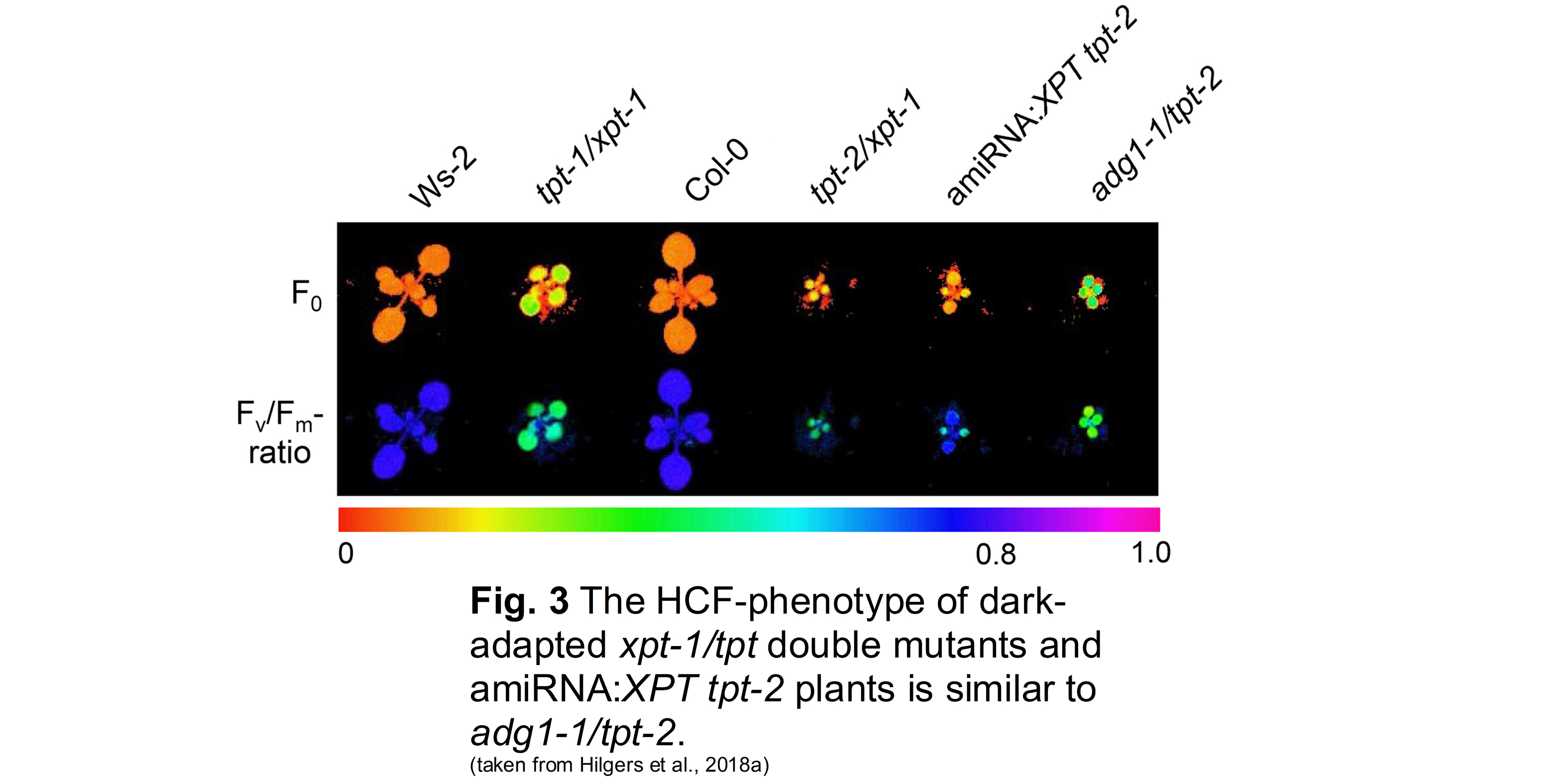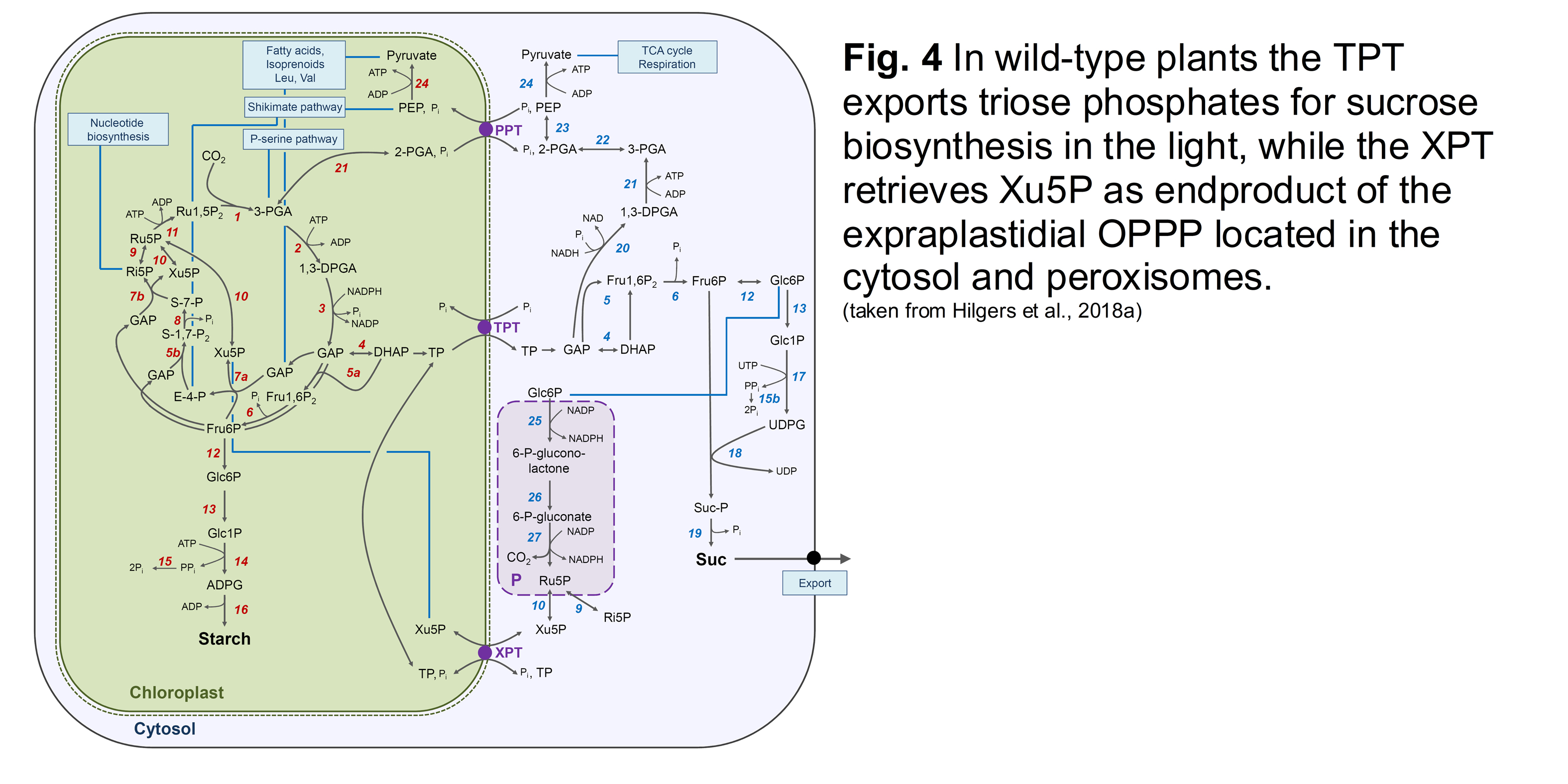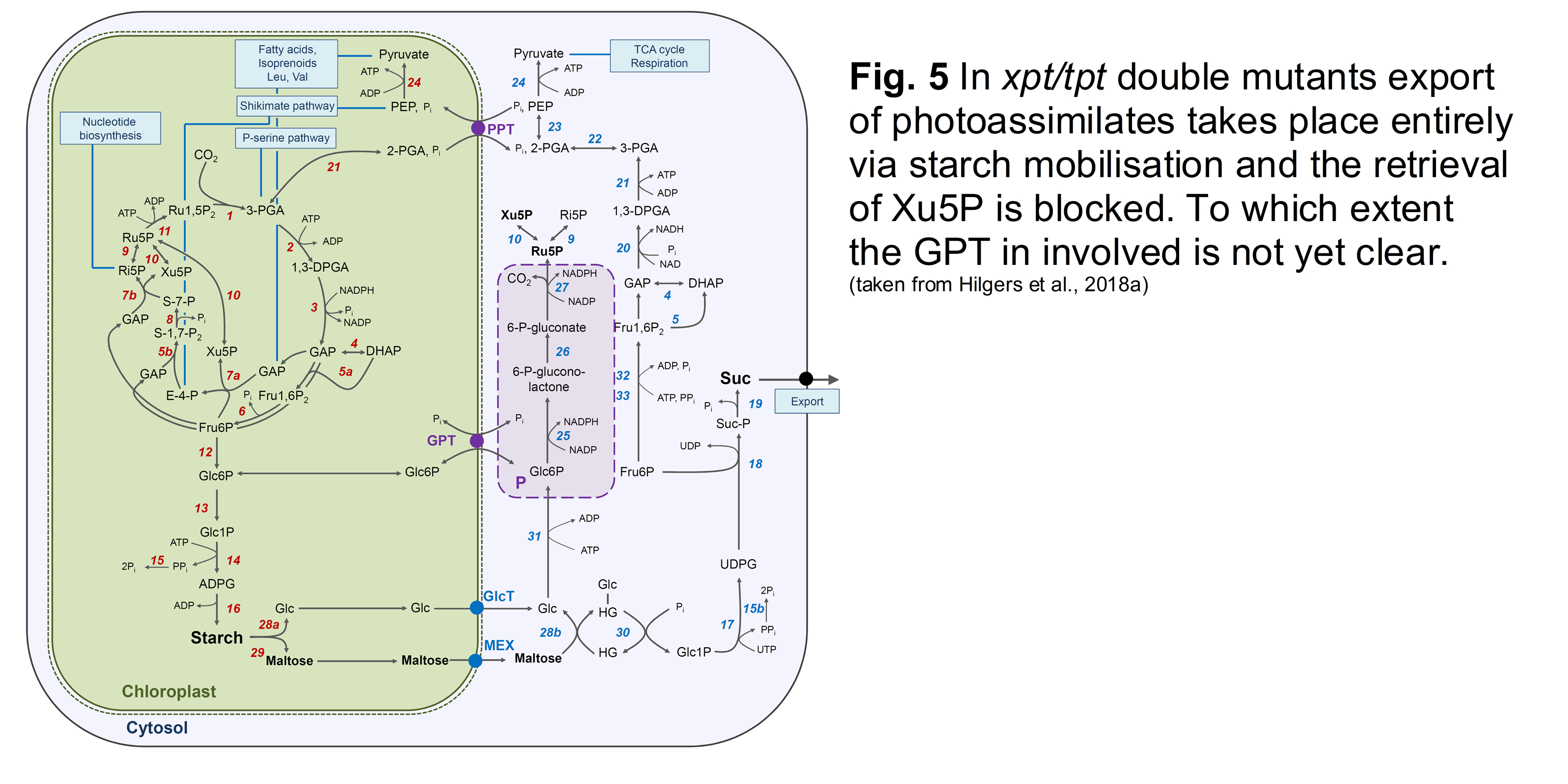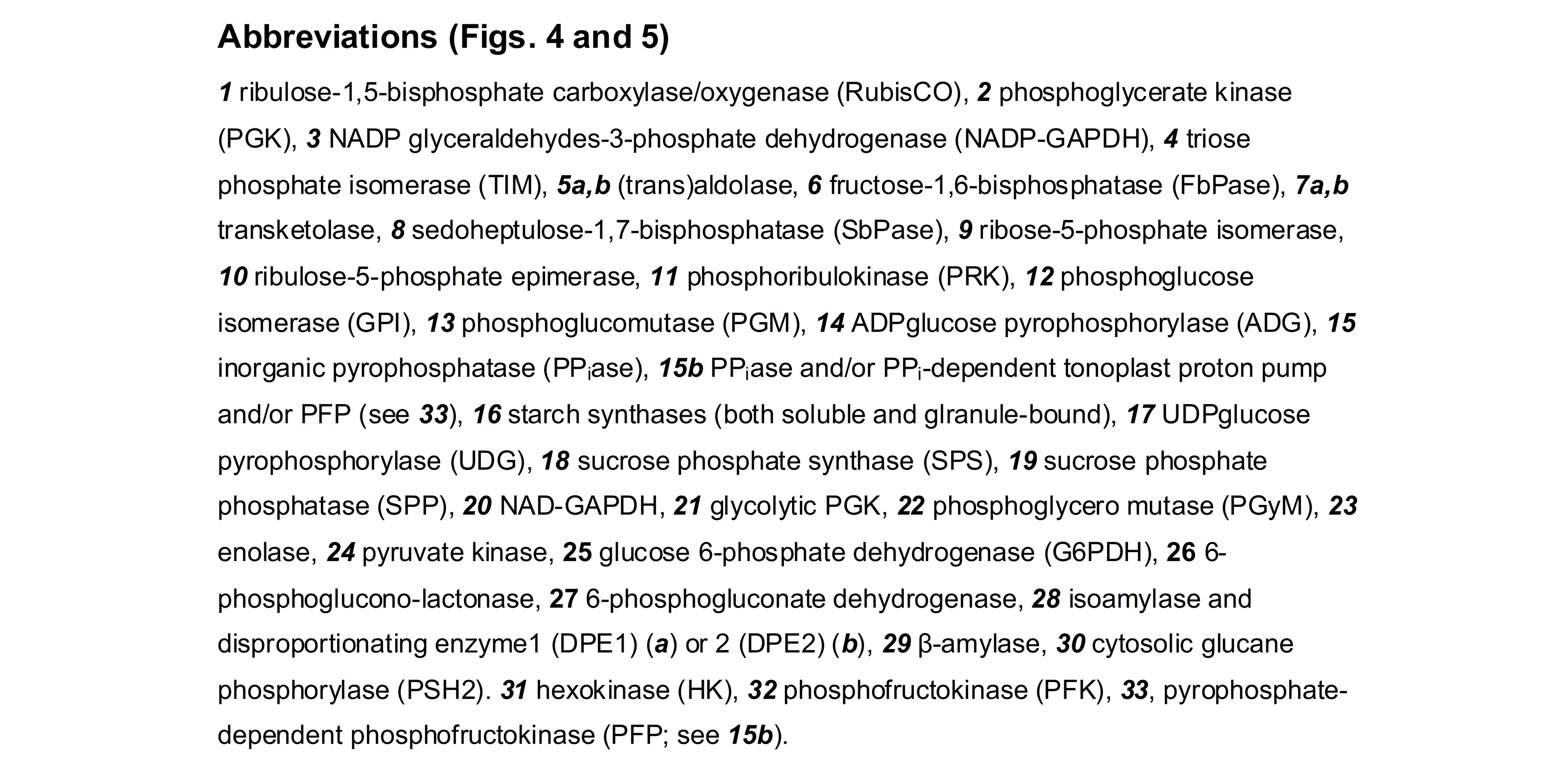Xylulose-5-phosphate/phosphate translocator
Like the TPT, the XPT represents a single copy gene in A. thaliana. Moreover, it is ubiquitously expressed in all major tissues during all phases of plant development. The proposed role of the XPT is the link between the plastidial and extraplastidial branches of the oxidative pentose phosphate pathway (OPPP; Eicks et al., 2002).
Strikingly, knockout mutants of the XPT lack any major visible of biochemical phenotype (Hilgers et al., 2018a; Fig. 1). However, double mutants with simultaneous lesions in XPT and TPT are retarded in growth (Fig. 2) and show a high chlorophyll fluorescence (HCF-phenotype) in the dark-adapted state (Fig. 3) resembling HCF of adg1-1/tpt double mutants.
Compared to wild-type plants (Fig. 4), assimilate export from the chloroplasts in the xpt-1/tpt double mutants presumably takes place entirely via the `night path of carbon´ (i.e., starch synthesis and simultaneous mobilisation). The double mutants are hence characterised by a steep increase in maltose levels deriving from starch degradation as well as Xu5P in the extraplastidial space, due to a lack of Xu5P retrieval to the chloroplasts and further metabolisation in the stroma (Fig. 5).
Moreover, the XPT can support or even substitute triose phosphate transport by the TPT (Hilgers et al., 2018b).
In future studies conditions will be established that increase the flux through the extraplastidial branch of the OPPP, with the aim to perturb pentose-P metabolism in the xpt single mutants.
(back to Rainer E. Häusler)
